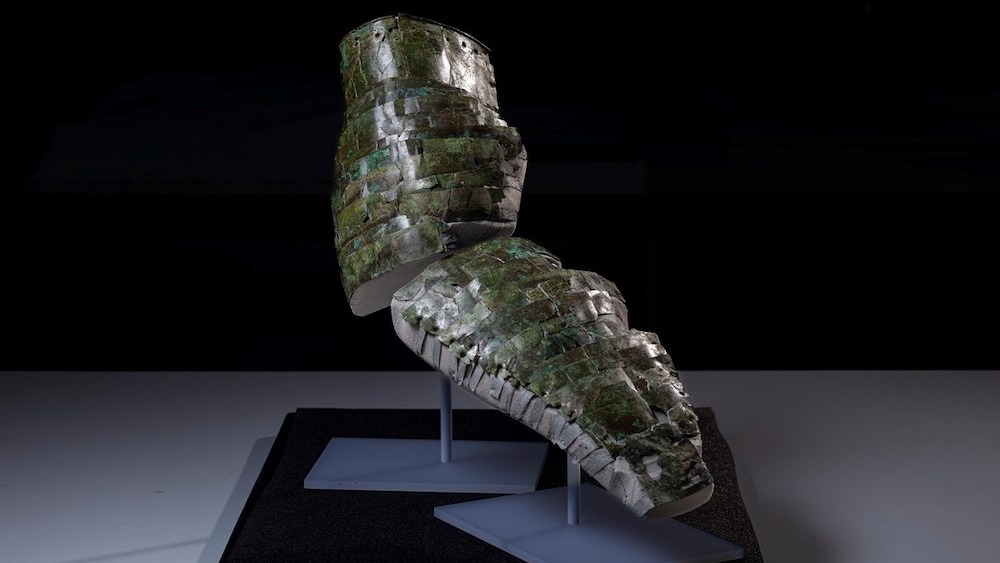
Conservators at National Museums Scotland have reconstructed a 1,800-year-old segment of Roman armor that was broken into more than 100 pieces. The completed work will be part of an upcoming exhibition.
For several weeks, museum conservators painstakingly pieced together what they're calling an "ancient jigsaw puzzle." The second-century brass armor was shattered into dozens of pieces and discovered in 1906 scattered throughout Trimontium, a former Roman fort site located southeast of Edinburgh, according to a statement from National Museums Scotland.
The fragments have been in the museum's collection ever since, with the upper portion on display for the past 25 years. (The lower portion had been on loan with the Trimontium Museum.)
"This is an incredibly rare object, and it's great that this exhibition gave us the opportunity to rebuild it," Fraser Hunter, principal curator of prehistoric and Roman archaeology at National Museums Scotland, said in the statement. "The transformation is striking."
Related: Roman dodecahedron uncovered by amateur archaeologists in the UK
Researchers initially thought the artifact was part of a thigh guard used by a cavalryman. However, as conservators worked out the arduous puzzle, they realized it was actually an armguard inspired by similar equipment worn by gladiators. The piece would have stretched from the shoulder to the hand and protected the wearer in battle.
"The flexible arm guard is an iconic piece of equipment for Roman gladiators, so it is unusual to see it as a sword-arm protection for Roman soldiers too," Richard Abdy, curator of Roman and Iron Age coins at the British Museum, said in the statement.
The artifact will be on display Feb. 1 through June 23 as part of an upcoming exhibition at the British Museum titled "Legion: Life in the Roman Army."
"Now that it's been reconstructed, you can picture the legionary who once wore it," Hunter said. "It was both protection and status symbol — brass was expensive and would have gleamed like gold on his sword arm. It offers a vivid connection to this important period when Scotland sat on the Roman Empire's northern frontier."







